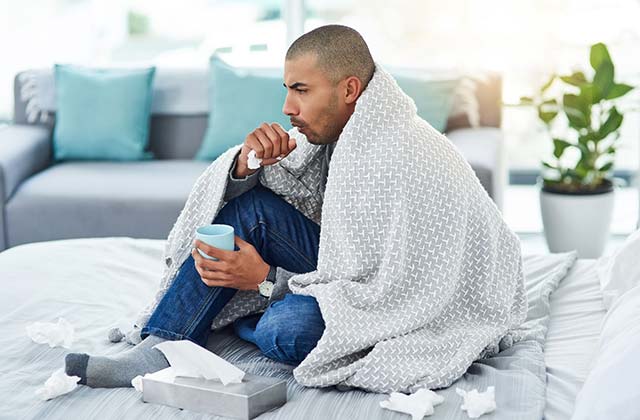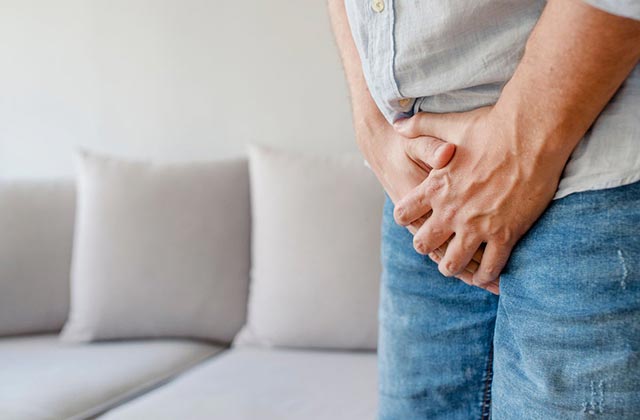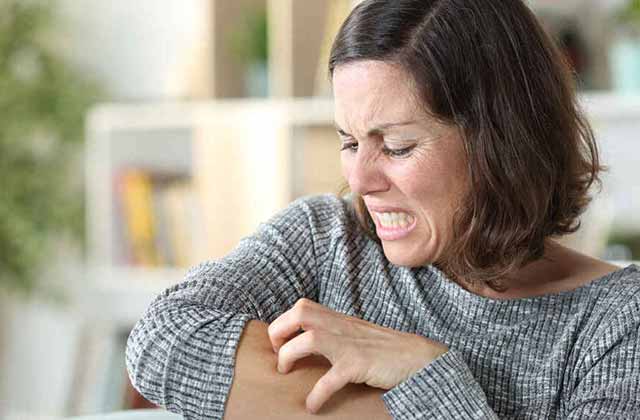If you suffer lower back pain, you are not on your own. Probably nearly all adults at some point in their lives will experience this condition that interferes with their work eg there is a high incidence of lumbar pain in drivers, everyday activities, sports (eg lumbar pain in golfers) or hobbies. Lower back pain or sciatica is considered the most common cause of job-related disability and the highest contributor to absenteeism in the western world. For example, it is second to headaches as the most common neurological ailment in the United States. Generally, most occurrences of lower back pain or lumbar pain subside after a few days, although some instances may take much longer to resolve or very occasionally lead to more serious conditions.
Short-term pain (Acute) generally lasts from a few days to a few weeks, and this condition tends to be mechanical in nature, the consequence of trauma to the lower back or a condition such as arthritis. Back pain from trauma may be caused by an injury sustained through sports activity, household jobs or working in the garden.
Sometimes, sudden jarring from a minor fall, or other stress on the lower back bones and tissues could be the root cause of low lumbar pain or sciatica. Symptoms of lumbar pain may range from aching muscles to shooting or sharp stabbing pain, limited flexibility and/or range of motion, or an inability to stand straight. Sometimes, pain felt in one part of the body may stem from a disorder or injury incurred in other parts of the body. Very occasionally acute low back pain syndromes could become more serious if untreated.
Definitions of what period or duration constitutes chronic back pain vary but pain that persists for over 12 weeks would generally be described as chronic.
Often the initial cause of the back problem is not known and this condition can sometimes be progressive The good news is that the vast majority of occurrences can be treated without surgery. Back pain treatments include analgesics, to reduce inflammation, to restoring proper mobility and strength to the back, by a variety of back pain products and therapies, to strategies for the avoidance of recurrence of the injury.
Usually patients suffering lumbar pain recover fully and don’t incur continuing loss of functionality. It’s advisable to contact your GP if there is no improvement or reduction in the back pain and inflammation after 3 days There is a plethora of exercises, medication, or therapy products and gadgets available to sufferers, designed to provide either, relief, prevention or both.
Although some of these back pain products (such as Magnatherapy or aromatherapy) would be described as ‘alternative’ or pseudoscientific ie they have few empirically or scientifically proven benefits, many are developed through the application of sound medical principle and theory. It’s worthwhile asking your GP for recommendations on any therapies as well as making sure that the cause is not more serious
Back pain therapy devices PGAT devices
Inversion Tables
Inversion is a natural form of passive gravity assisted traction (PGAT) that uses the patient’s body weight in conjunction with gravity to decompress weight-bearing joints. While the patient is rotated and suspended, gravity effectively creates a traction, resulting in a customized stretch that extends the spine, from the sacroiliac to the cervical joints of the neck, increasing the space between the vertebrae, which relieves the pressure on the discs and nerve roots. By reducing this pressure there is less interference with the spinal nerves thus reducing lower lumbar pain. Inversion is considered to be an effective therapy This is typically performed on what’s called an inversion table.
The table allows you to lie on your back relaxed, in an inverted position. This position eliminates some or all gravitational compression, depending upon how far back you position your body. Inversion therapy relieves back pain, and it works even better when it’s part of a well-rounded therapy plan that addresses the specific muscle imbalances you have. But even by itself it is highly effective. A recent study done at Newcastle University found that over 70% of patients who performed inversion therapy were able to cancel their scheduled back surgeries.
CPM Mobilisers
Backlife
Backlife is designed to apply a Continuous Passive Movement (CPM) to the lower back pain sufferer in a similar way to how a healthcare professional, as part of his back pain therapy, would apply in order to help relieve pressure between the vertebrae, and therefore relieve pain in the lumbar region. In order to apply CPM the user would lie on the floor bending their knees over the upper section of the machine. As the upper section moves, it gently rotates the pelvis in a circular fashion, allowing the joints to move, whilst the joints remain relaxed. The advertised benefits of Backlife for pain relief are that it reduces the stress and pressure on the lower back, restores back mobility and improves stability. In addition it reduces lumbar pain with regular use, improves posture, and reduces muscle tension.
Back in action Mobiliser
The Back in Action Mobiliser is an extremely powerful medical grade spinal joint mobilisation system, available for home or professional use for back pain relief. It’s described as usually very effective at decreasing the symptoms of long term and chronic musculo-skeletal problems. The system applies very localised pressure to the muscles either side of the spine, simulating a practitioners ‘thumbing technique,whilst mobilising the spine, flexing and extending the spine, freeing up stubborn vertebrae. In addition to this the mobilise provides a continuous passive motion (CPM) considered to be beneficial to health and aid healing The mobilise has been used to treat conditions such as: lumbago; prolapse /slipped disc, sciatica; scoliosis, arthritic hips, sacro-iliac dysfunction, whiplash injuries; fibromyalgia and many other disabling conditions. It is also comprehensively tested and endorsed by medics, so that it is probably the most commended back pain therapy care system available. Its most significant disadvantage is that it is made in small numbers and is expensive to buy however they are available to hire.
Backstretcher
The Backstretcher, also known as the Rolastretcher provides relief with a combination of massage and stretching movements, allowing the user to move and stretch different parts of the spine by moving up and down the frame. The rollers also provide pressure (acupressure) on the back muscles either side of the spine where dysfunctional trigger points (knots) often occur. It provides back pain sufferers the opportunity to complement their therapeutic treatment with a device, which is portable, The effectiveness of this device has been confirmed by scientific study by the University of Iowa’s Spine Centre.
Flexibak
Flexibak is back support cradle that is designed to ease lower back pain problems, reduce discomfort, and promote relief, by decompression of key joints, allowing natural movement to return to the user. Flexibak, developed by 2 leading British osteopaths, is designed to encourage the lumbar and sacroiliac joints to open up, and encourage the return of natural movement as pressure on inflamed muscles is relieved.
Back cushions and wedges and Supports Cushions
Back cushions
These are custom shaped soft cushions which are tailored to the natural shape of the user’s lower back and designed to offer support whilst maintaining an ergonomic and comfortable posture whilst sat on a chair or in the car, thus providing an element of relief for low back pain.
Seat wedges
Seat wedges provide lumbar pain relief in a natural passive manner. Sitting on a seat wedge has the effect of moving forward the pelvis which has the effect of causing the users spine to adopt a more ergonomically correct upright posture. Seat wedges maybe useful for lumbar pain suffering car drivers by angling their backs into more comfortable driving positions, or in sedentary workplace situations where the back pain sufferer may be adopting a suiting position for several hours, for example call centre workers. Ideal for everybody working in a sitting position, especially PC users. A variant of the seat wedge is the coccyx wedge which incorporates a cut away section to reduce or avoid pressure on the sacrum or coccyx which could be causing lower back pain or tail bone pain.
Back Braces
These aim to constrict the affected area of low back pain low afflicted area, these strap-on body braces help reduce lower back pain and help to correct poor posture.
TENS units
TENS (Transcutaneous electrical nerve stimulation) is the application of electric current produced by a device to stimulate the nerves for therapeutic purposes. In this case we are referring to portable stimulators used to help with back pain. The unit is usually connected to the skin using two or more electrodes or semi adhesive pads. Although the first units developed in the US for testing tolerance of chronic back pain sufferers to electrical stimulation in preparation for surgically invasive implants, many patients reported deriving relief from the TENS itself. A number of companies began manufacturing TENS units after the commercial success of the Meditronic device became known TENS is regarded as a non-invasive, safe nerve stimulation intended to reduce pain, both acute and chronic. Controversy does exist over its effectiveness in treating of chronic back pain. In 2007 a feature in the Pain Journal concluded that ENS was effective for chronic musculoskeletal pain whereas the journal Neurology advised against recommending TENS for chronic lower back pain,but other neurologists in the same journal suggested that in some patients TENS is useful. TENS units available from high street retailers Baxolve offers immediate relief for lower back pain through a combination of TENS therapy and lumbar support in one easy to use convenient belt.
Heat and cold back pain products
There is little empirical evidence that the application of hot and cold compresses actually effectively relieve back pain conditions, although the use of hot and cold compresses may provide relief by helping to reduce the lower back pain, spasms, and inflammation, in turn allowing for improved mobility for some back pain sufferers. Immediately after the trauma, the sufferer would apply a cold compress (generally ice packs or refrigerant gel) to the affected area of the lower back pain, maybe after a strain, for up to about 20 minutes a few time a day, for a couple of days to help reduce tissue inflammation. After a couple of days the back pain sufferer would then apply heat to the affected area, using a variety of methods such as heat pads, heat lamps etc for short durations. This has the effect of dilating the blood vessels which increase blood flow to the affected tissues, and encouraging the healing process. It also has the effect of relaxing the muscles similar to having a warm bath after exertion. As with any back pain treatment it’s advisable to consult your GP before commencing a treatment.
Magnet therapy
Magnet therapy can be described as an alternative or pseudoscientific method of back pain treatment, using magnetic fields on the body to promote back pain relief and healing, with a perceived, though not understood positive effect on blood oxygen content. There is no scientific basis to conclude that small, static magnets can relieve pain It has its origins in Traditional Oriental Medicine (TOM) dating back some 2000 years, centered around ‘Chi’or ‘energy flows’ around the body and instrumental in health and wellbeing, with magnetic wave therapy having associations with acupuncture or and acupressure. Although it is regarded with an element of scepticism due to seemingly physical and biological implausibility, in Eastern countries, therapeutic magnets are licensed as medical devices, and it does appear to be gaining some recognition within the US medical community, with an example of affirmative research of published in the MDBR Journal of Rheumatology. The downside to this is the difficulty associated with establishing true blind testing of magnets and associated ‘placebo or Hawthorne’ effects within test groups. By all means have a look at what’s available but remain sceptical.
Ultrasound
Ultrasound is often used as a method of pain relief by physios and therapists in combination with other pain treatments, such as manipulation, massage, ice treatment and interferential (electrotherapy). The ultrasound device causes millions of sound waves to penetrate deep into tissue in order to promote healing of inflamed or damaged muscles, tendons and ligaments. It’s claimed that ultrasound can reduce tissue inflammation by stimulating blood flow, promote healing by stimulating soft tissue, and assist in the absorption uf analgesics, and reduce pain. Again there is conflict over the effectiveness for lower back pain treatment with both positive user testimonials offset by inconclusive meta analysis. See Physical Therapy article Jul 2001 and New Zealand Journal of Physiotherapy Jul 2008
Ultralieve
Ultralieve Pro is a mains operated or portable hand held medical grade device designed for home use to help with pain and promote healing by conducting ultrasound waves into the damaged tissue. Although the device is easy its perhaps best if the user has received ultrasound treatment previously from a physio or healthcare professional, and again it’s advisable to check with your GP or physio before using one to derive pain relief It should not be used as a replacement for conventional help with back pain but in conjunction with it in between sessions. Again there is conflict over the effectiveness to help with back pain with both positive user testimonials offset by inconclusive meta analysis.
Article Source: https://EzineArticles.com/expert/David_Pegg/785947
Article Source: http://EzineArticles.com/5536574


